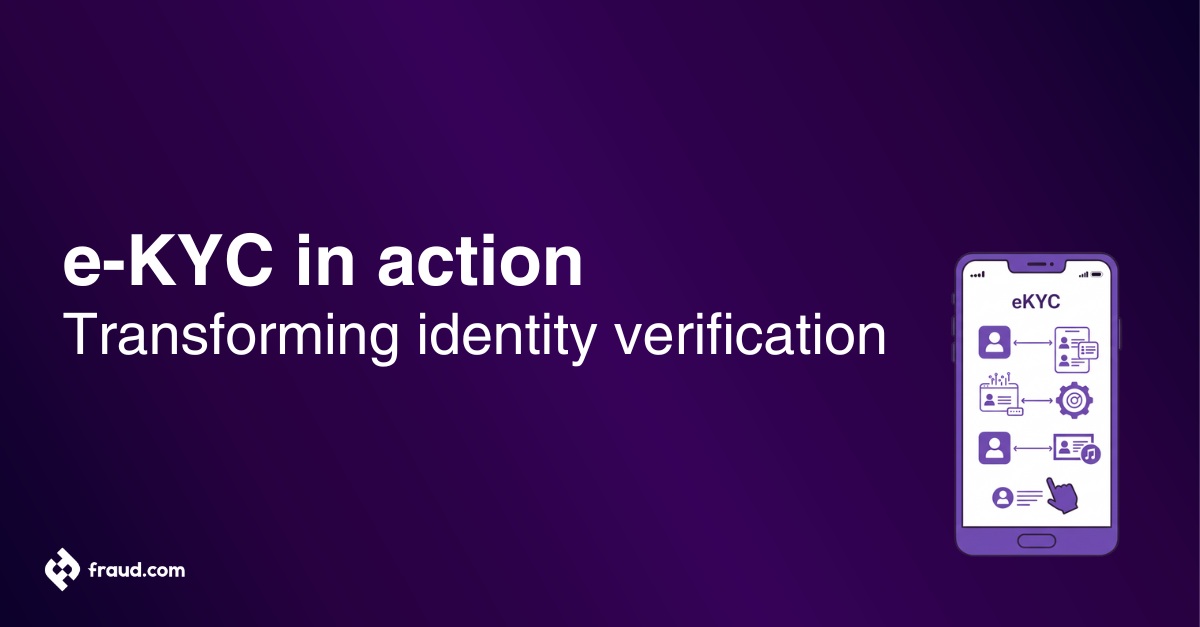In the banking industry, acronyms like KYC (Know Your Customer) and AML (Anti-Money Laundering) are more than just professional terminology; they are the bedrock of financial security and regulatory compliance. KYC and AML practices play a pivotal role in safeguarding the integrity of the financial system and protecting both banks and their customers from fraud. In this article, we delve into the trends and challenges surrounding KYC and AML in the banking sector, highlighting their significance and the evolving strategies that banks are adopting to stay ahead in the compliance game.
Table of Contents
ToggleWhat is Know Your Customer (KYC)
KYC, short for “Know Your Customer,” is a critical process used by financial institutions, such as banks, to verify their customers’ identities. The primary goal of KYC is to ensure institutions have adequate information about their clients, helping assess the risk associated with each customer and prevent financial crimes like money laundering, terrorist financing, and bank fraud. The KYC process typically involves collecting various forms of identification and documentation from customers, including government-issued IDs and proof of address. This information is used to verify the customer’s identity and assess the legitimacy of their financial activities. Financial institutions are required to conduct thorough KYC checks, particularly when customers open new accounts or engage in high-value transactions.
Key elements of a robust KYC process include customer identification, Customer Due Diligence (CDD), and ongoing monitoring, ensuring the highest levels of integrity in financial services while protecting the financial system from illicit activities.
What is Anti-Money Laundering (AML)
Anti-Money Laundering (AML) encompasses policies, regulations, and practices used by banks and financial institutions to detect and prevent money laundering and terrorist financing. Money laundering conceals the origins of illegally acquired funds, while terrorist financing supports terrorist activities. AML closely integrates with KYC, leveraging information collected during the KYC process to identify unusual or suspicious financial transactions. The primary AML objective is to ensure that financial institutions do not unintentionally facilitate illegal financial activities and to report such activities to relevant authorities.
To comply with AML regulations, banks employ methods like transaction monitoring, customer risk assessment, and reporting fraud to fulfil compliance standards. They are also obligated to maintain transaction records, document customer transactions, and provide ongoing staff training to stay current with AML developments.
The importance of KYC and AML
The importance of KYC and AML cannot be overstated. These are not optional exercises; they are legal requirements imposed on banks and financial institutions by regulators worldwide. KYC, or “Know Your Customer,” involves the thorough verification of a customer’s identity to confirm their legitimacy and assess the risks they may pose. It is the foundational step to prevent identity theft, fraud, and other financial crimes. On the other hand, AML measures are designed to detect and prevent money laundering, which is the process of making illegally obtained funds appear legal.
Banks are on the front lines in this ongoing battle. They are the gatekeepers tasked with ensuring that the funds passing through their institutions are clean and that their customers are who they claim to be. These measures are not just regulatory boxes to tick; they are essential for preserving the integrity of the banking sector and the broader financial system.
Trends and challenges in KYC
To keep up with the dynamic and ongoing changes in the KYC world, banks should consider the following trends and challenges:
- Digital transformation: The digital age has spurred a transformation in KYC practices, with banks embracing tech-savvy solutions for verifying the identity of their customers. This includes digital onboarding processes and advanced verification technologies like biometric authentication and e-signatures, enhancing both customer convenience and identity verification accuracy.
- Risk-based approaches: Banks are increasingly adopting risk-based KYC, focusing their resources on higher-risk customers to mitigate risk factors. This approach allows for a more efficient allocation of efforts and resources where they matter most.
- Global KYC utilities: Collaboration is on the rise as banks explore shared KYC utilities, enabling multiple institutions to contribute to a centralized database of customer information for opening accounts, streamlining onboarding, and reducing duplication.
- Evolving KYC requirements: Regulatory requirements for KYC, which include a Customer Identification Program (CIP) and Enhanced Due Diligence (EDD), are constantly evolving. Staying up-to-date and adapting KYC procedures to comply with new standards is an ongoing challenge for banks.
- High-risk customer segmentation: Accurately identifying high-risk customers and scrutinizing sanction lists remains a significant challenge. Effective risk assessment is crucial to distinguish between low-risk and high-risk customers and allocate resources accordingly.
- Privacy and data protection: As KYC procedures require the collection and storage of sensitive identifying information, ensuring compliance with evolving privacy and data protection laws is a significant challenge for safeguarding customer data.
- Cross-border operations: For banks with international operations, dealing with different KYC requirements in multiple jurisdictions can be complex. Ensuring compliance with various regulatory regimes while maintaining consistency in customer identity verification processes is a challenge.
- Customer experience: While enhancing security is critical, banks also face the challenge of providing a smooth and efficient onboarding experience for customers opening accounts. Striking a balance between robust KYC practices and a positive customer experience is an ongoing challenge.
- Emerging technologies: As technology continues to evolve, new challenges arise in KYC. Embracing emerging technologies like blockchain and digital identities for KYC can be both an opportunity and a challenge, requiring banks to stay ahead of the curve.
- Regulatory arbitrage: Some businesses may exploit regulatory differences between jurisdictions to their advantage. Banks must be vigilant to prevent regulatory arbitrage while complying with KYC requirements in various regions.
Trends and challenges in AML
- Enhanced transaction monitoring: Banks are investing in sophisticated transaction monitoring systems that use artificial intelligence and machine learning to identify unusual patterns and suspicious activities to prevent money laundering. Real-time monitoring is becoming the norm to detect and report potential money laundering.
- Customer Due Diligence (CDD): The focus on CDD, which includes verifying the identity of users, is increasing, with banks encouraged to know not only the customer but also the customer’s customers. Achieving transparency and uncovering hidden risks is vital for compliance with AML laws.
- Regulatory Technology (RegTech): RegTech solutions are gaining ground, offering specialized technologies to help banks comply with evolving AML laws and regulations more efficiently. These solutions assist in risk assessment, customer due diligence, and fraud reporting.
- Evolving AML laws and regulations: AML laws and regulations are continually evolving to address new threats and vulnerabilities, making it essential for banks to invest in compliance measures and adapt to the latest legal requirements.
- International cooperation and information sharing: AML efforts often require international cooperation and information sharing among banks and regulatory bodies to prevent fraud. Establishing secure, efficient channels for sharing information across borders while adhering to data privacy regulations is a complex challenge.
- Cryptocurrencies and digital assets: The rise of cryptocurrencies and digital assets has introduced new challenges in AML. Ensuring that banks can monitor and detect potential money laundering and illegal activity involving these assets is a complex task.
- Trade-based money laundering: Trade-based money laundering schemes are becoming more sophisticated. Detecting and preventing these complex transactions, which involve the use of international trade, poses a significant challenge for AML efforts.
- The rising volume of transactions: Banks are processing an increasing number of transactions, making it more challenging to monitor and identify suspicious activity related to fraud. Scaling AML systems to handle higher transaction volumes efficiently is a priority.
- Evolution of fraud methods: Fraudsters continuously evolve their methods, creating challenges for banks. AML efforts must adapt to address these evolving techniques, such as cybercrime and new forms of fraud.
- Resource allocation: Allocating resources for AML effectively is a persistent challenge. Banks must balance the costs of compliance with the risks they face, ensuring they are adequately staffed and equipped to address emerging AML threats.
While KYC and AML trends are moving in the right direction, several challenges persist. The regulatory landscape is complex and constantly evolving, demanding significant resources from banks.
In conclusion, staying ahead of evolving trends and addressing the challenges in both KYC and AML is an ongoing endeavour for banks and financial institutions. While these areas are vital for preserving financial integrity and security, they also require continuous adaptation and innovation to tackle new threats and ensure compliance with changing regulations.
The future will likely see more emphasis on digital identity verification, as well as greater international cooperation among banks and regulators. Artificial Intelligence and machine learning will continue to be instrumental in improving the efficiency and effectiveness of KYC and AML processes.
KYC and AML with Udentify and aiReflex
Udentify is the go-to solution for identity verification and authentication, while aiReflex takes the lead in transaction monitoring and fraud detection, both contributing to KYC and AML compliance in innovative ways.
Udentify delivers highly accurate and efficient identity verification and authentication services. Its digital onboarding processes, incorporating advanced biometrics and e-signatures, not only enhance the customer experience but also ensure robust identity verification. This solution aligns seamlessly with the trend of risk-based KYC, allowing banks to focus their resources on higher-risk customers and adapt to evolving KYC requirements with ease.
On the other hand, aiReflex excels in the realm of AML, featuring advanced transaction monitoring systems driven by AI and ML. These systems efficiently detect and report unusual patterns and suspicious activities, making them a valuable tool for preventing fraud in real time.
As KYC and AML regulations continue to evolve, Udentify and aiReflex provide adaptable and state-of-the-art solutions for identity verification, transaction monitoring, and fraud detection, ensuring that the banking sector remains at the forefront of financial integrity and security.
In conclusion, Udentify and aiReflex are driving innovation in KYC and AML compliance, enhancing security, and compliance while providing a seamless customer experience. This evolution ensures that the banking sector remains a guardian of financial integrity and stability in an ever-changing landscape.









